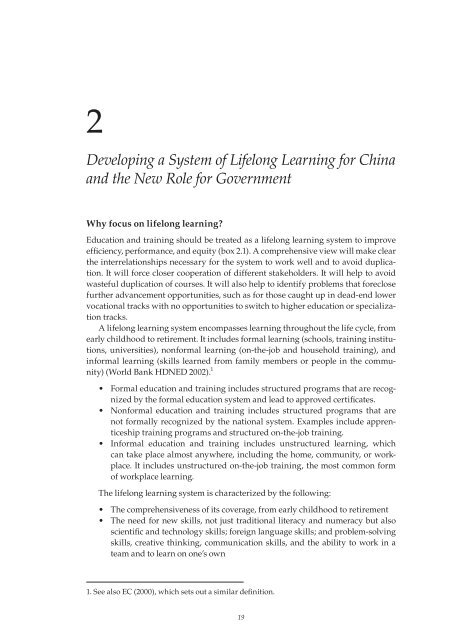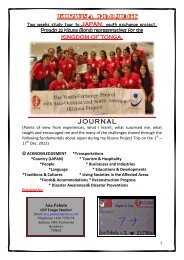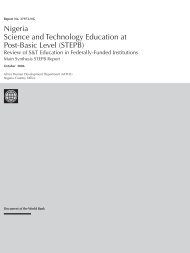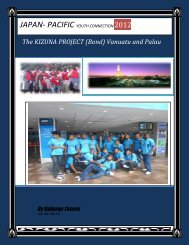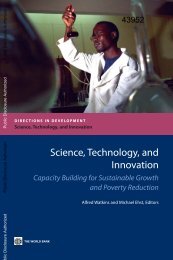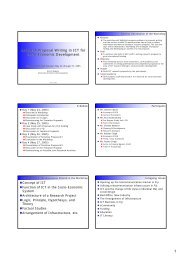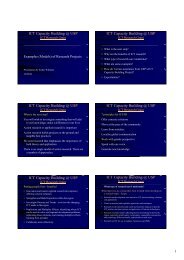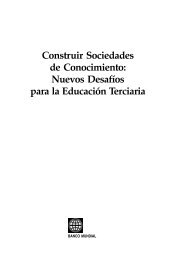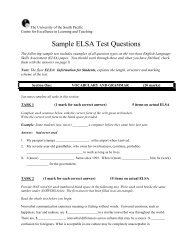Enhancing China's Competitiveness Through Lifelong Learning ...
Enhancing China's Competitiveness Through Lifelong Learning ...
Enhancing China's Competitiveness Through Lifelong Learning ...
You also want an ePaper? Increase the reach of your titles
YUMPU automatically turns print PDFs into web optimized ePapers that Google loves.
2<br />
Developing a System of <strong>Lifelong</strong> <strong>Learning</strong> for China<br />
and the New Role for Government<br />
Why focus on lifelong learning<br />
Education and training should be treated as a lifelong learning system to improve<br />
efficiency, performance, and equity (box 2.1). A comprehensive view will make clear<br />
the interrelationships necessary for the system to work well and to avoid duplication.<br />
It will force closer cooperation of different stakeholders. It will help to avoid<br />
wasteful duplication of courses. It will also help to identify problems that foreclose<br />
further advancement opportunities, such as for those caught up in dead-end lower<br />
vocational tracks with no opportunities to switch to higher education or specialization<br />
tracks.<br />
A lifelong learning system encompasses learning throughout the life cycle, from<br />
early childhood to retirement. It includes formal learning (schools, training institutions,<br />
universities), nonformal learning (on-the-job and household training), and<br />
informal learning (skills learned from family members or people in the community)<br />
(World Bank HDNED 2002). 1<br />
• Formal education and training includes structured programs that are recognized<br />
by the formal education system and lead to approved certificates.<br />
• Nonformal education and training includes structured programs that are<br />
not formally recognized by the national system. Examples include apprenticeship<br />
training programs and structured on-the-job training.<br />
• Informal education and training includes unstructured learning, which<br />
can take place almost anywhere, including the home, community, or workplace.<br />
It includes unstructured on-the-job training, the most common form<br />
of workplace learning.<br />
The lifelong learning system is characterized by the following:<br />
• The comprehensiveness of its coverage, from early childhood to retirement<br />
• The need for new skills, not just traditional literacy and numeracy but also<br />
scientific and technology skills; foreign language skills; and problem-solving<br />
skills, creative thinking, communication skills, and the ability to work in a<br />
team and to learn on one’s own<br />
1. See also EC (2000), which sets out a similar definition.<br />
19


